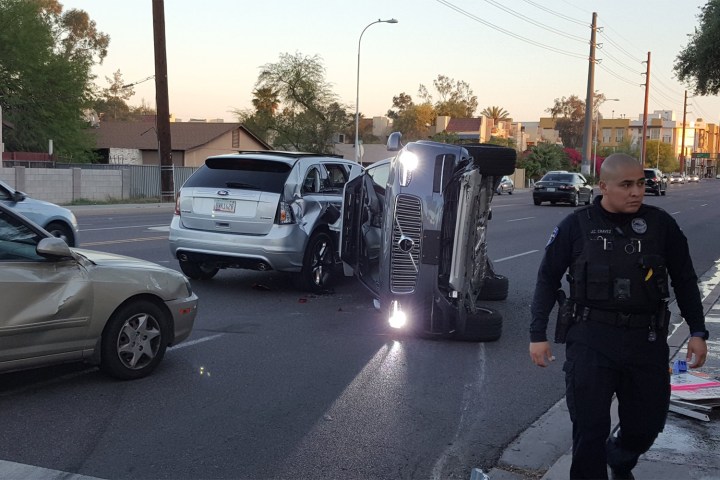
Photos of the accident scene in Tempe, Arizona, showed one of Uber’s Volvo SUVs on its side, while another car nearby appeared pretty beat up. There were no reports of serious injuries.
Uber’s car, which had engineers in the front two seats and no one in the back, was in self-driving mode at the time of the collision, local cop Josie Montenegro told reporters. She added that the accident occurred when the other car apparently failed to yield to Uber’s vehicle at a left turn.
BREAKING: Self-driving Uber vehicle on it’s side after a collision in Tempe, AZ.
Photos by @fresconews user Mark Beach pic.twitter.com/5NCF2KG0rW
— Fresco News (@fresconews) March 25, 2017
The company’s fleet of 16 self-driving cars had been on the streets of Tempe for just over a month as part of a pilot program. It confirmed over the weekend that it’s also suspended testing at its two other sites in San Francisco and Pittsburgh while it continues with investigations into what caused the smash-up.
Uber customers had been able to take rides in the self-driving cars, but anyone nervous about doing so could use the app to opt out of the opportunity. While Uber’s technology doesn’t appear to have been at fault in Saturday’s accident, it’s possible the publicity surrounding the incident will prompt some riders to think twice about hopping into one of Uber’s driverless cars when they return to the streets.
The San Francisco-based ride-hailing giant started testing its driverless car technology in Pittsburgh last year before expanding the pilot program to its home city. However, a run-in with regulators at the end of 2016 prompted the company to shift testing from San Francisco to Tempe, Arizona. Uber recently received permission to relaunch testing in the California city.
The Tempe crash certainly isn’t a first for a self-driving car companies, with, for example, Google’s own project — now operated by Waymo — having experienced a few incidents up to now.


